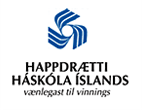Question
Why are one of the world's richest fishing grounds situated around the coast of Iceland?
Asked By
Valdís Kristjánsdóttir
Steinunn Ingvarsdóttir
Ólafur Vignisson
Answer
The rich fishing grounds around Iceland depend on highly fertile phytoplankton communities. Phytoplankton are tiny water plants. In the summer, they live in the upper photic zone of the sea where they are carried by currents. Like plants on land, phytoplankton have the ability to use sunlight to make organic matter out of non-organic. This process is called photosynthesis and provides the main source of organic material for other organisms. Phytoplankton is food for zooplankton, which in turn is food for young fish and for pelagic fish. So the phytoplankton is the basis for all organic life in the sea, and thus for the fishing stocks. In order to flourish and grow, phytoplankton need nutrients such as nitrate, phosphate and silica. Deep sea is normally richer in nutrients than surface sea, and the most fertile seas in the world are found where the nutrient-rich deep sea water has easy access to the surface layers. This can be found in the upstream areas off the west coast of South America and Africa and in high latitudes, where winds and ocean currents promote the mixing of deep sea with surface layers, thus renewing nutrients near the surface.
Um þessa spurningu
Dagsetning
Published 7.3.2005
Category:
Keywords
Citation
Ástþór Gíslason. „Why are one of the world's richest fishing grounds situated around the coast of Iceland?“. The Icelandic Web of Science 7.3.2005. http://why.is/svar.php?id=4815. (Skoðað 29.10.2025).
Author
Ástþór Gíslasonsérfræðingur á Hafrannsóknastofnun



